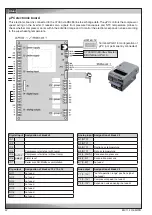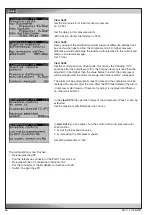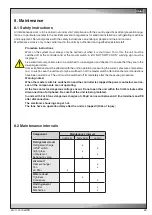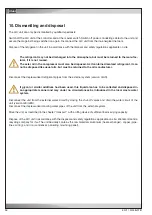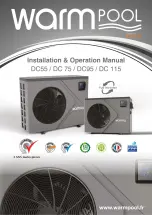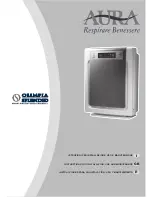
50
/11.2015/
G17D
D
R
Y
W
E
T
EN
8.3 Refrigerant circuit
Refrigerant charge - Quantity and Purity
Quantity -
Check the
sight glass
and the
LP switch
(there is no LP switch in units with EC compressor).
An unsufficient charge causes the formation of bubbles in the sight glass or in extreme cases the triggering of the
LP-switch. An operation with an unsufficient refrigerant quantity over a longer period leads to a reduction of cooling
capacity and to high superheating temperatures, which have a disadvantageous effect on the compressor lifetime.
If a leak is detected:
• let out the refrigerant in a collecting device down to a pressure of 1 bar
absolut
• connect a vacuum pump via a pressure gauge station on the high and low pressure side
• extract the refrigerant by the vacuum pump (not by the compressor !) to approx. 0 bar
absolut
.
• dispose the refrigerant according to the national regulations
• fill the circuit with nitrogen to 1 bar
absolut
• repair the leak
• the circuit has to be run dry by several (at least 3x) fillings and extractings of nitrogen, eventually change the
filter drier.
• fill with refrigerant according to weight (see technical data)
R410A must be charged in a liquid state, in order that the composition of the refrigerant does not
change.
Quantity -
Check the
HP switch
An overfilling of the circuit makes the condensation pressure rise and by that the power consumption of the com-
pressor. In the extreme the HP-switch triggers.
Purity -
Check the
sight glass
and the
filter drier.
Bubbles in the sight glass indicate that the charge is unsufficient or that the filter drier is clogged.
A pollution of the filter drier, whose origin task is to clear the refrigerant from impurities and humidity, can be detected
by a temperature difference upstream and downstream the filter drier.
Compare the colour indicator in the centre of the sight glass with the outer ring scale.
green ---> ok.
yellow ---> humidity critical.
Sight glass
With too much humidity in the circuit, the expansion valve can freeze. In addition
to this the ester oil in the compressor, which comes in touch with the refrigerant,
takes up humidity and loses its ability to lubricate.
In this case the refrigerant must be completely evacuated and recharged ac-
cording to the above described evacuation instruction.







